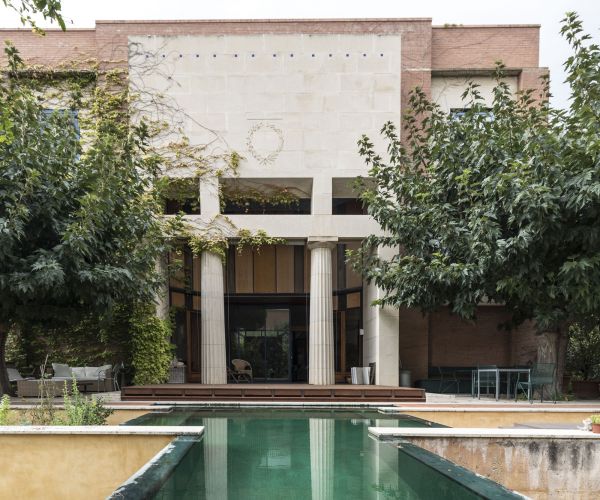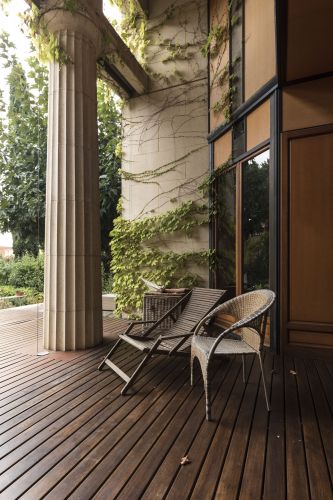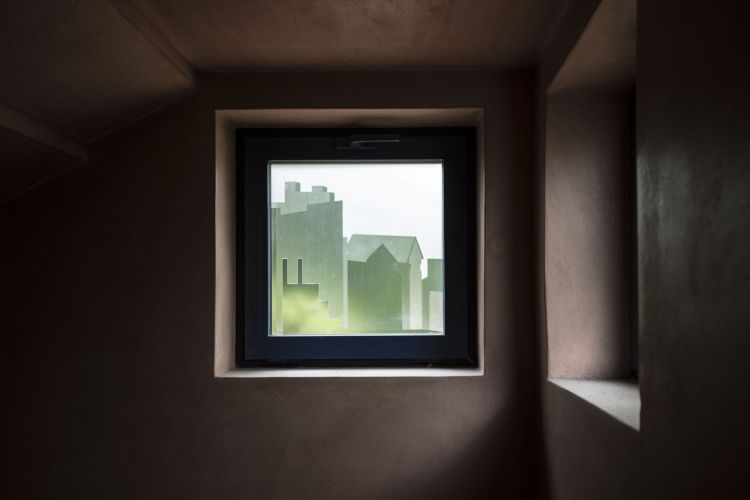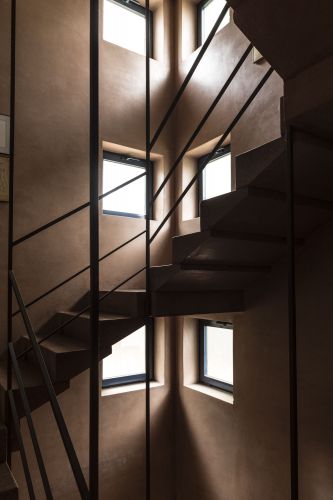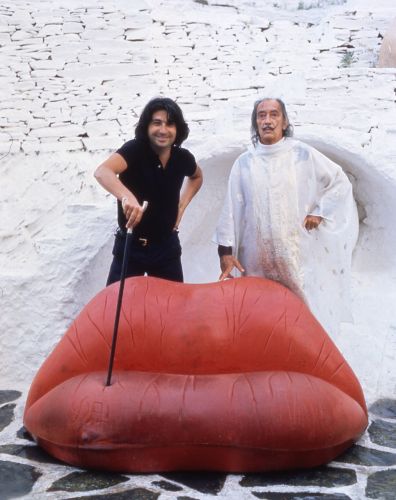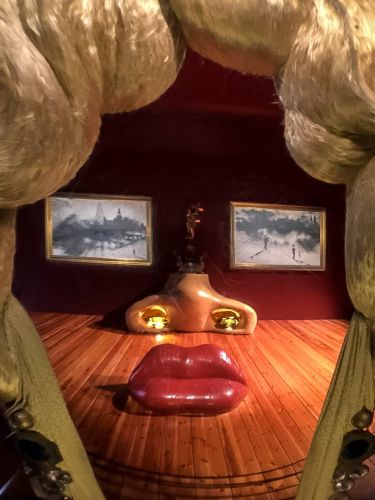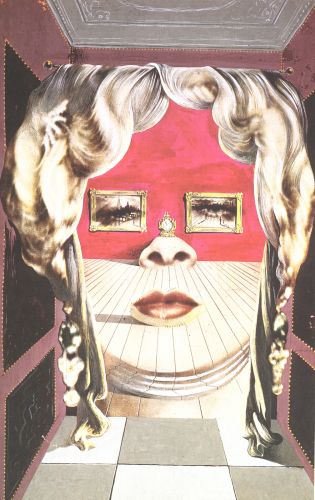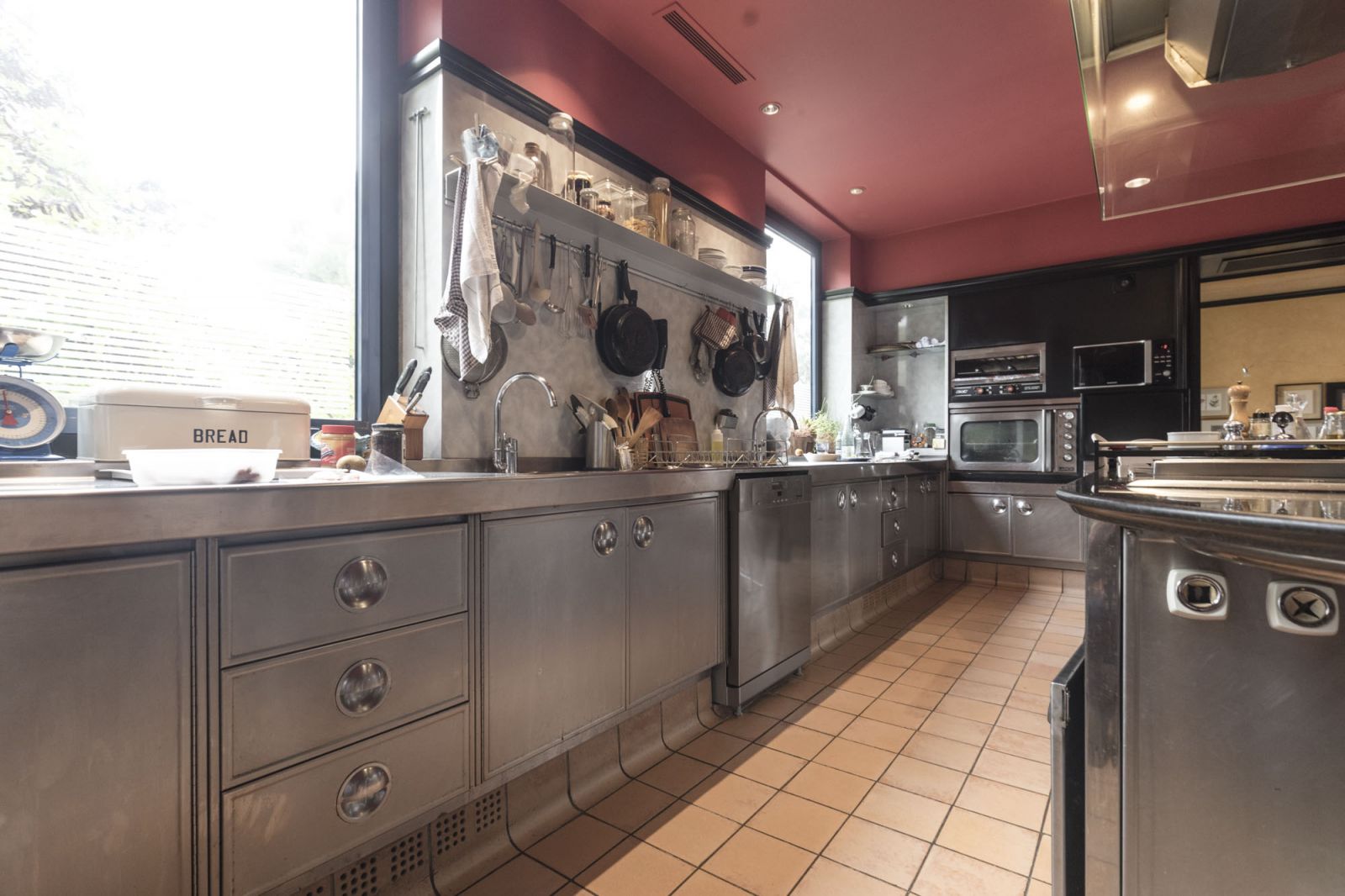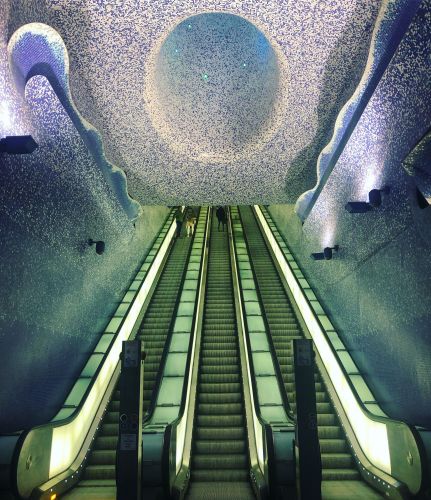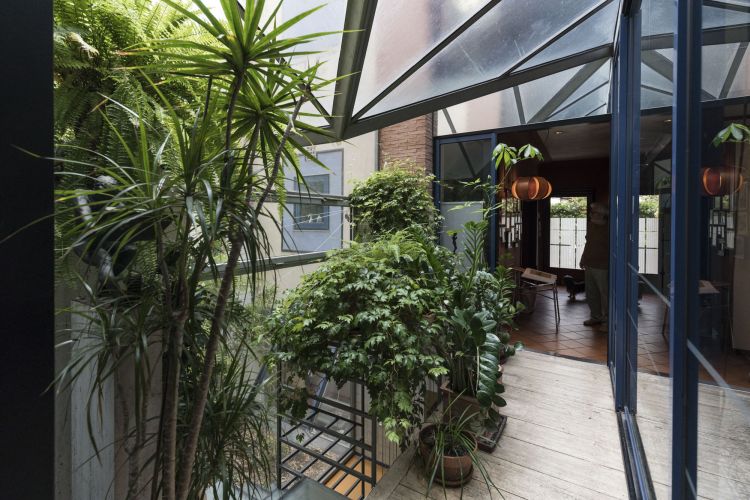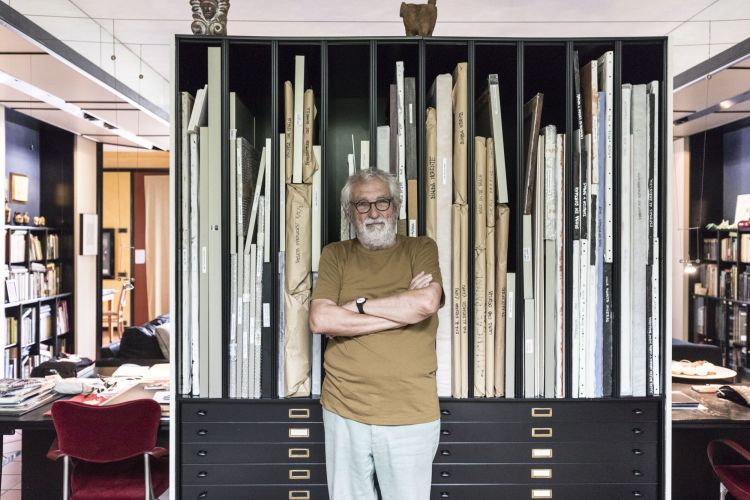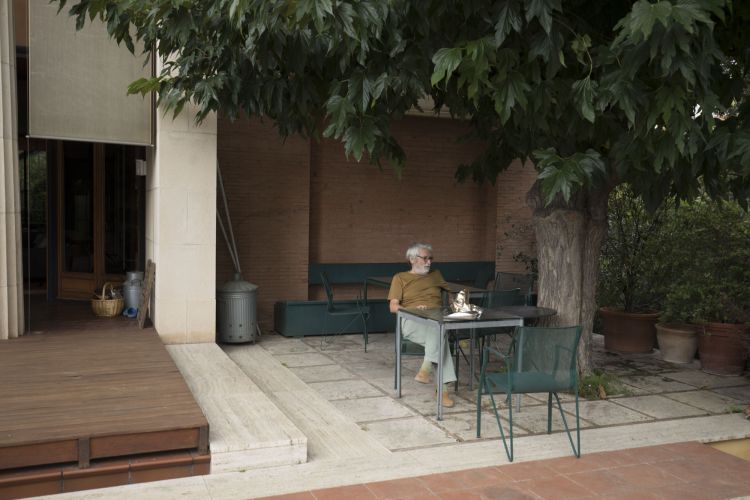When our photographer Jan-Willem and I stood in front of the given address in a suburb of Barcelona, we looked around for a while quite confused. There was no front door to be found, only a long wall with something looking like a garden door or side entrance, without a bell or nameplate. Eventually we were saved from our predicament by the charming and extremely Spanish assistant Pilar from Tusquets Blanca (who likes using both his surnames).
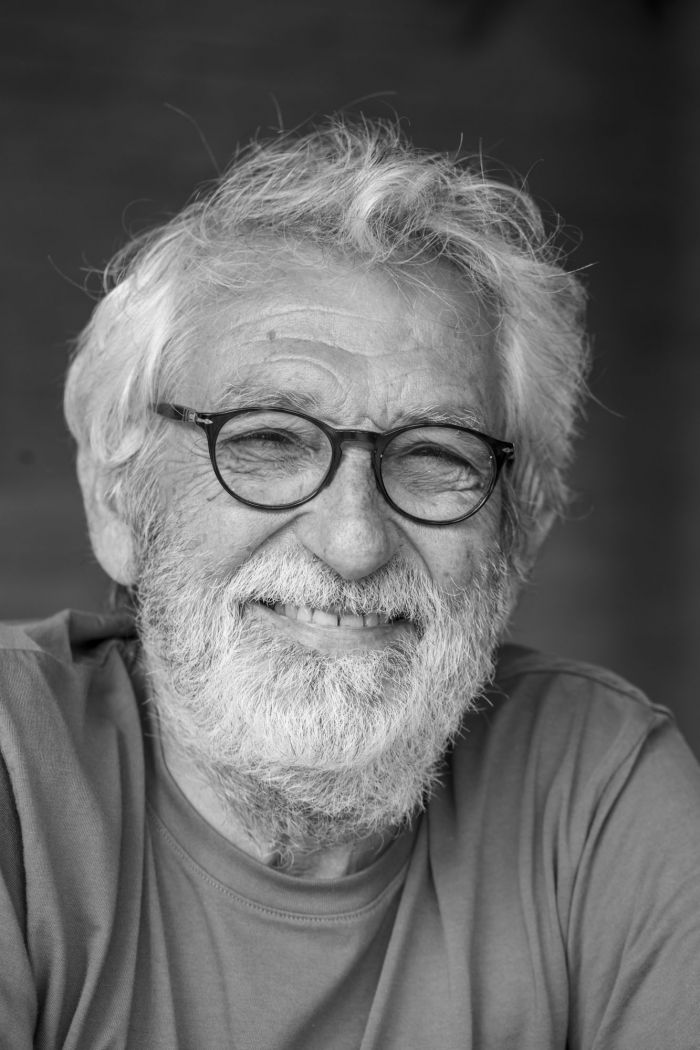
Oscar Tusquets Blanca
He is an architect, writer, painter, furniture designer and sole caretaker of Salvador Dali's heritage. It is almost incredible how Oscar Tusqets is so equally accomplished in all of these roles.Like an embodiment of a Gesamtkunstwerk.
A complicated corridor system led us through the basement of the house and the design studio of Tusquets Blanca, full of all kinds of chairs. We passed through a hall with framed drawings of his children and through a kind of conservatory with tropical trees and arrived at the living room which also happens to be his studio.
It is an unusual house but it is actually lived in. When we eventually took a seat under the large sycamore tree in the garden, we saw what a beautiful and huge monumental building it was. Tusquets Blanca built it in the 1980s with a visionary perspective. The upper floor - with a separate entrance - now houses a notary's office. Originally this was his studio space, but the crisis also hit hard in Spain. Tusqets Blanca shrugs his shoulders. "This solution is fine too."
The Mae West Room
We drank tea from a silver-plated organically-shaped pot, a design by Tusquets Blanca itself (Alessi Oronda, 1983). He talked delightfully, with stars in his eyes, about his intensive, lifelong collaboration with Salvador Dalí. It was he who created the Mae West Room together with Dalí in 1974, a commission from the Theatre-Museum Dalí in Figueras, with a sofa in the form of lips, some curtains, a small cupboard and two paintings depicting the face of Mae West, taken from the painting “Mae West's Face which May be Used as a Surrealist Apartment” from 1934-35. The lip-sofa was taken into production in 1972 by BD Barcelona, the furniture company started by Tusquets Blanca and a number of fellow architects in the same year.
‘An architect by training, a designer by adaptation, a painter by vocation and a writer through the desire to make friends’
He was proud that he was the only living member of the committee established by Dalí himself to protect his work (Fundació Gala-Salvador Dalí).Due to the success of Dalí's imaginative work, there were all kinds of companies who wanted to market products using his name."That can so easily become kitsch," explains Tusquets Blanca. So Dalí himself put together a group whose task was to evaluate such proposals based on their dimensions, ratio, quality, use of materials and so forth. BD Barcelona itself brought a number of very successful Dalí items to the market under the leadership of Tusquets Blanca, mostly in limited editions. For example, the Leda armchair-sculpture, the Bracelli lamp, the Vis-à-vis de Gala sofa and the Rioncerontico doorknob. Tusquets also designed chairs, wall systems and tables for his own company, of which the wooden Gaulino chair (1987) is perhaps the most striking.
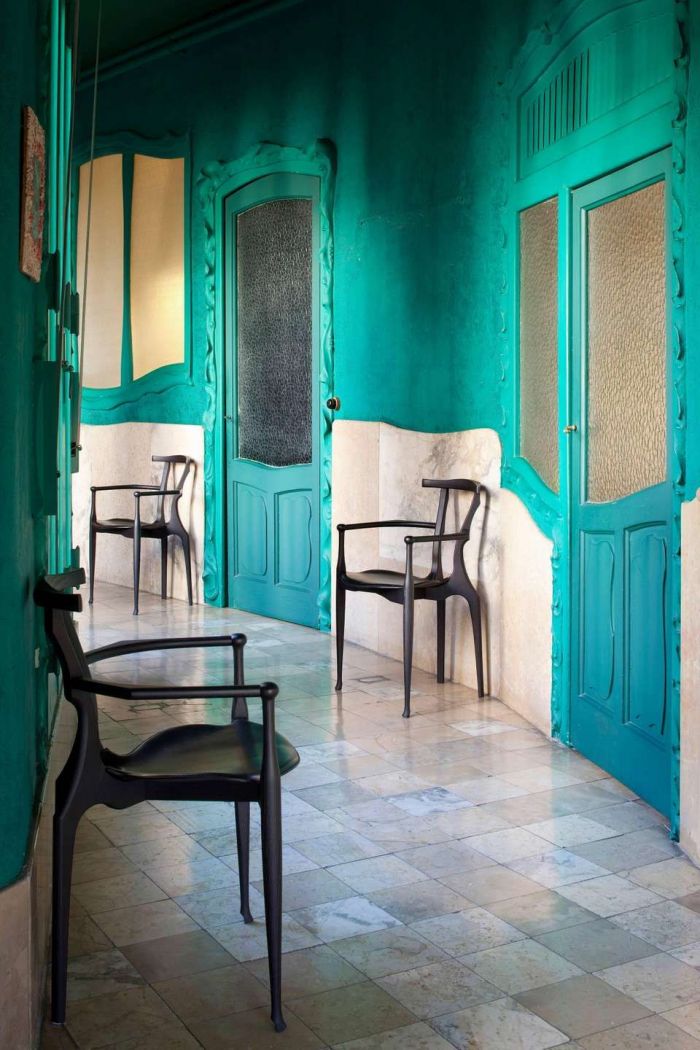
A simple box
With many gestures and much enthusiasm, he talked about his work as an architect and his house: in his own words a simple box with three floors. "Everyone was a bit disappointed that it was such a classic and simple design." Opposite the house was a garden of exactly the same dimensions. A traditional garden with fruit trees, herbs, roses and vegetables. "There is no grass to be seen." The swimming pool was an elongated strip; an extension to the veranda and the living room, measuring exactly one traditional swimming pool lane wide. Tusquets starts his day every morning with a ritual that keeps him fit and alert. One of his last major projects was the Toledo metro station in Naples. "It has a opening above the escalators so that you can see the sky. Fantastic, but unimaginably complex
Later I searched again in Google for the name Oscar Tusquets Blanca and found a wild photograph of him and Dalí from the seventies. In it, Tusquets Blanca is a black-haired passionate young architect, with ambition and fervour radiating from him, very different to the extremely friendly and gentle man I spoke with. (I came to almost the same conclusion as described by friend Ingo Maurer: "Wow! He had the flair of a revoluzzer. I wish I had met him at that time, to understand when and how and why he left his skin behind.’)
Elusive
When we said goodbye, he give me a pile of books as a gift. Tusquets is not only an architect; he also writes and paints and has worked in television. His book about his deceased wife Anna is very moving; he depicts her in her dying bed mercilessly clear, but extremely lovingly, in beautifully painted portraits.
When we were outside again and in the taxi, I was just as desperate as at the beginning, but now weighed down by the information and impressions we received. The Tusquets phenomenon is not easy to grasp. With every room we looked at, every corner we turned and every new story we heard, he distinguished himself a little more. Tusquet is therefore perhaps the model of a real Spaniard: layered, complex, tender, but also clear, sharp and always a bit elusive.
TUSQUET'S BIOGRAPHY
Oscar Tusquets (born 1941) has been working for more than fifty years as an architect, author, décor/product designer and is the founder of the furniture brand BD Barcelona. After his study period at the Escuela Técnica Superior de Arquitectura, Tusquets began doing small renovations and designing homes for friends and relations. At that time in the late 1960s, Spain was quite a different place to the rest of Europe. It was a dictatorship. Franco thought that architecture should be grand and classical. He hated modernism because it was influenced by reformist ideals and strived for social equality.
As a upcoming architect, Oscar Tusquets had few opportunities to take part in major construction projects. That is why he developed his skill as a promoter of his own profession, as an author and curator of exhibitions and as a designer of sets for theatrical performances. Around the mid-seventies at the end of the Franco period, designing started to become more prominent in Barcelona. Pioneers such as André Ricard and Miguel Milà looked to Milan for examples and made contact with Italian designers such as Magistretti, Scarpa and Gardella. Specialized training courses such as EINA and Elisava were set up and professional organizations began awarding prizes for product and graphic designs.
It was at this time that Oscar Tusquets, together with Luis Clotet, founded BD Ediciones de Diseño in 1972. This new brand specialized in small series of lamps, chairs, cupboards and beds. Tusquets also decided to become a curator, manager and producer of the furniture of his friend and mentor Salvador Dalí. His career advanced steadily in close parallel with the cultural and social emancipation taking place in Catalonia. The Catalan New Wave generation was building a new Barcelona. The city was opened up to the sea, the historic fabric was renovated, new walking routes laid out, public spaces created and a modern metropolis was born. The "Barcelona model" brought about a gigantic urban renaissance that culminated in the hosting of the 1992 Olympic Games.
